Birth Gemstones
Birthstones are typically associated with your birth month. The very concept of wearing Birthstones has been there since ancient times. As per Indian Astrology, there are certain recommendations of wearing specific gemstones as per your birth month.
These birthstones not only look great but have been proven to provide you extra ordinary benefits in life. Below, we have listed these gemstones along with an option to buy them online, directly from our website. As the no. dealers for birthstones has increased exponentially in last few years, it has become very hard to rely and trust on one. DeepakGems, being in the market for more than 25 years has a great reputation and trust in the market of buying gemstones online.
So just select your gemstone and place an order with us, from anywhere in the world.
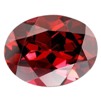
January : Almandine Garnet
Red to Crimson and Violet Red but found in all colours. Has a hardness value of 61/2 to 71/2 on the Mohs scale. Garnet is associated with faith, eternity and truth. Mystical significance has been attached to the wearing of garnets; they were supposed to ward off accidents during travel. From a family of silicate minerals, of six distinct types five are polished and used in Jewellery. Only a small percentage of Garnets found are of gem quality. The Garnets most often seen by Jewellers are the deep-red Almandine and the blood-red Pyrobe. At one time the source of most of the Pyrobes was an area known as Bohemia where archaeological finds suggest that the Jewellery industry existed in this part of Europe as early as the 5th century AD. These people set the local Garnets in gold.
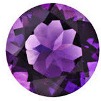
February : Amethyst
Amethyst comes from the ancient Greek word "amethystos" which means "not drunken". In the days of the ancient Greeks, there was a myth that if you put an amethyst stone in your wine you wouldn't get drunk. Amethyst comes from most parts of the world, Brazil being the most common. The most sought after are the rich deep purple ones. Purple has been a sign of royalty and nobility and has been favoured by Romans (on their togas) and medieval people with amethyst adorning their clothing. The Victorians also loved amethyst and much of their antique jewellery we see today features it. On the Mohs scale amethyst is 7 (out of 10 ), so the stone is pretty durable. It comes from the quartz family of gemstones and is classed as semiprecious. Scotland is more familiar with smokey quartz which is a relative of amethyst and not as brightly coloured as its sibling. Amethyst is also considered as a mystical stone with healing and calming properties and is also is associated with luck, wit and health.
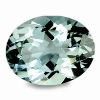
March : Aquamarine
Aquamarine, the pale blue green variety of beryl is valued as a gemstone and is the commonest variety of gem beryl. Emerald is also in this family of gemstones. Happiness and understanding are associated with aquamarine. When presented to a new bride the stone is said to ensure consistency. Aquamarine comes from a Greek word meaning "sea water". The stone occurs in pegmatite, in which it forms larger and clearer crystals than emerald. (One completely transparent crystal from Brazil weighed 110 kilograms or 234 pounds). On the Mohs scale of hardness aquamarine measures 7-5 to 8 and is therefore a durable stone. The chief source of aquamarine is Brazil and is also found in the Ural Mountains, USSR, Madagascar, Ceylon, India, Maine (New Hampshire), Connecticut, North Carolina and Colorado. Heat treatment improves the colour of many gem beryl's. Green beryl turns blue between 300 and 450 Degrees centigrade (570 and 840 Fahrenheit).

April : Diamond
Diamond is the ultimate gift of love and it is said that cupid himself had arrows tipped with diamonds. It comes from the Greek word "adamas" meaning unconquerable, suggesting the eternity of love and the Greeks believed that you could see the flame of love in them when you saw their sparkle when held up to the light. Diamond is the hardest of all gemstones and registers 10 on the Mohs scale. A diamond can be any colour of the rainbow. The Tiffany diamond owned by the American jeweller with the same name was bright yellow in colour and weighed 287-4 carats. It was not round but cut in a cushion shape with 90 facets (the flat surface light reflects from ). The Cullinan is the largest diamond in the world and now takes pride of place in the British royal crown. It weighs a staggering 317-4 carats and like the yellow diamond is cut in a cushion shape. Diamonds come from various sources including South Africa, the main exporter, India, Zaire, Brazil, Sierra Leone and Venezuela. Eternity, courage and health are associated with diamonds. A DIAMOND IS FOREVER.

May : Emerald
Emerald comes in many shades of green, from a deep forest green to an insipid pale watery green. The most sought after are the rich velvety green colours. A characteristic of emeralds is that they tend to have inclusions in the stone. Inclusions are small specks which are found in precious stones. Every stone is unique and in emerald a perfect stone is extremely rare indeed. As early as 2000 BC, near the Red Sea in Egypt, the Cleopatra Mines were being worked. Emeralds were highly sought after by the Ancient Egyptians and also by the Incas. Fine emeralds come from Brazil and Columbia. Other places they have been found are Russia, Australia, Africa, Pakistan and India. A word of warning though to everyone who owns a piece of this beautiful stone, emeralds are treated with an oil which soaks into the stone and affords it protection. You have to be careful how you clean emeralds and don't accidentally take out the protective oil. Do not ultrasonic clean emeralds and be careful with the baths of jewellery cleaner as these methods may strip the stones of their oils. Emerald registers at 8 on the Mohs scale of hardness but it can be susceptible to chipping. Fidelity, goodness and love are associated with emerald. Emerald features in engagement and eternity rings, set together with diamonds. Emerald is the 55th wedding anniversary stone.

June : Pearl
This gem isn't really a "gemstone" as such. It is what is known as an organic material. This signifies that it was derived from a living organism, i.e. an oyster which is living made it. Amber and jet all fall in to this category as they came from living trees. The oysters which these pearls are farmed come from the Persian Gulf and the Gulf of Manaar but bigger pearls are also farmed off the coast of Australia and Malaysia. Traditionally pearl fishing consisted of a boat and a diver who didn't have any of the fancy apparatus we have today. Divers simply jumped off their boats and held their breathes, sometimes going down as far as 90 feet unaided and prised oysters off the rocks. It was a dangerous occupation and as many as 500 oysters had to be obtained this way a day for it to be profitable. Cultured pearls are also farmed nowadays and to make a cultured pearl, a foreign object, usually a glass bead, is inserted into the pearl. This irritates it and it coats it with nacre, the substance real pearls are made of. Simulants have been used to imitate pearl and these are in the form of a bead coated in fish scales or a coating of suitably coloured paint. To know what kind of pearls you have got you can do the teeth test. This involves rubbing them against your teeth (natural ones) and if they are gritty they are most likely to be cultured or real. Scotland has its own freshwater pearls and they feature in a lot of traditionally Scottish jewellery. These pearls come mainly from the Tay and are not uniform in shape but knobbly. Pearls are associated with peace, beauty and nobility and throughout the years royalty have worn them and made them fashionable. 30 years celebrate the pearl anniversary.

July : Ruby
The ruby stones we find are a type of corundum. Corundum is a family of stones in which sapphire is also a member. Corundum is a hard substance, just under diamond in the Mohs scale at 9. Ruby is only referred to when speaking about the red stones of the corundum family so ruby is only ever found in shades of red. The best quality "blood red" rubies come from Burma and are highly sought after for fine quality gold jewellery usually with diamonds accompanying them. Rubies from Thailand have a tinge of brown to them and Ceylon (Sri Lanka) produce pink tinged rubies. The Mogok region of Burma has mined rubies for thousands of years and we can tell this by the stone age tools found in the area. Even today not much has changed and the women still mine in the aluvial deposits beside the streams in their national costume with wicker baskets and pan for stones using the gravel taken from the stream beds or the 20 to 40 feet pits sunk in to the valley dug by the men folk. Because of the demand over the centuries and the intensive farming for the stone, ruby is in less abundance but now and again a new mother lode can be found which unearths good quality material. Sapphire however is more widely distributed round the earth. Love enthusiasm and strength are associated with the ruby stone. Engagement and eternity rings are made using this stone because if the hard wearing properties. It is also presented on ruby weddings for a 40th anniversary.
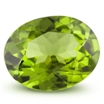
August : Peridot
True peridot is only ever found in a green colour; yellowish green, pistaccio green or oily bottle green. It comes from the Greek word "Peridona" which means to provide plentifully. Zeberget, an island in the Red Sea was the main source of the stone. Its ancient name was Topazios and in those days peridot was often referred to as topaz although they were not the same stone. Peridot can be bought in such items of jewellery as brooches, pendants, earrings and rings. The biggest deposit of peridot is in the San Carlos Apache Reservation and is worked by the natives themselves. These stones are yellowish green. Burma also mines peridot and they produce rich green stones. These tend to be good quality. Success, peace and luck are associated with the peridot stone. Green features in many items of celtic jewellery.

September : Sapphire
When thinking about sapphire many people tend to conjure up a picture of a blue stone but this is not completely true. Sapphire can be found in many different colours including pink, green, purple and peach tones. It is a member of the corundum family which ruby is a member of also. All red corundum is referred to as ruby and all other coloured corundum is sapphire. Sapphire and ruby have a hardness of 9 on the Mohs scale. They are only second to diamond and as they are hard wearing. Many pieces of jewelry are made from them, these include engagement rings, pendants, brooches and earrings. Sapphires are usually accompanied by diamonds. The inky black sapphires originate from Australia and are not as expensive or sought after as the cornflower blue Ceylon (Sri Lankan) sapphire. Other places sapphires are found are Burma, Africa,U.S.A, (Montana) and Russia. Sapphires can also display a phenomenon inside the stone called asterism. These sapphires are called star sapphires and as their name indicates, the illusion of a star is viewed when you look into the stone. A well coloured star sapphire can cost an arm and a leg and are highly sought after.

October : Opal
Australia has been the biggest contributor to supplying opal to the gem business. The fine black opals came from Australia with their brilliant flashes of colour. The beautifully coloured milky opal was also mined in Australia. In the present day however the opal mines are virtually mined out. Opal doublets and triplets are increasingly more common. These consist of a sandwich of 2 or 3 pieces of opal cemented together to build up some colour. It is difficult to detect opal doublets when they are mounted in a setting as it screens the join. Mexico is another exporter of opals but these tend to have a multi coloured fire. The characteristic of the orange glow provides the fire opal variety, hence its name. Opals are favoured by many people and are beautiful when mounted in jewelry. Opal is a soft stone and can flake because it is made of layers, one on top of the other. It measures about 6 on the Mohs scale of hardness and is cut in a cabochon shape which protects it. A cabochon is a domed shape with no facets and a flat bottom. South America provides opals with an apple green sheen.
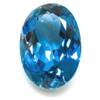
November : Topaz
Topaz comes in different shades of brown and a lovely sherry/ honey colour which is the most sought after. Topaz is sometimes called "Brazillian topaz" which is a variety of real topaz but there is another name which is used "quartz topaz" which is not topaz at all. Brown topaz is not the most common variety white is. Blue topaz is also found but is a bit more rare than the white. Pink topaz has also been found in small quantities but most of the pink used is actually yellow topaz which has been exposed to heat treatment which makes it turn pink. Topaz has a Mohs hardness of 8 so it is suitable for rings, pendants and earrings. The main source of topaz is Brazil, hence "Brazillian topaz" but Australia, Japan and Burma also mine topaz. Britain is a source of topaz and these stones have been found on St. Michaels Mount, Lundy Island, The Cairngorms in Scotland and the Mountains of Mourne. As it is a Scottish stone it is incorporated in the intricate Celtic jewellery made in gold and silver. Associated to the stone is wisdom courage and sincerity.
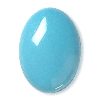
December : Turquoise
The name turquoise comes from the country of Turkey but funnily enough it was mined in Persia (Ali-mersai Mountain) not Turkey. It is an opaque greeny blue stone and is usually cut in the domed cabochon fashion. Turquoise has been a popular stone for jewellery throughout history. Much of the items recovered from tombs of Egyptian nobility were encrusted with turquoise. It was a regal stone. The colour of the stone is enhanced by staining and oiling to protect it. Cornwall has a supply of turquoise. It was originally called henwoodite and not associated at all with turquoise but is now recognised to be turquoise. As with opal turquoise is porous so it is not suitable for ultrasonic cleaning. Turquoise is formed in layers and is found in thin bands. It is sometimes cut with the mother rock which is sandstone or limonite and the mixture is set in jewellery. The mixing of the 2 stones is called turquoise matrix and can look very pretty. Associated with turquoise is love happiness and luck.